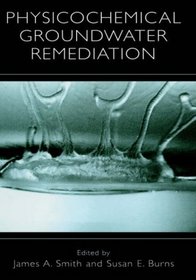Search -
Physicochemical Groundwater Remediation
Physicochemical Groundwater Remediation
As we transition into the 21st century, it is apparent that this is an exciting time for environmental engineers and scientists studying remediation technologies. There has been a rapid development of new ways to clean-up polluted groundwater. Research activities of the past and next 10 years will have a dramatic impact on the quality of the sub... more »
As we transition into the 21st century, it is apparent that this is an exciting time for environmental engineers and scientists studying remediation technologies. There has been a rapid development of new ways to clean-up polluted groundwater. Research activities of the past and next 10 years will have a dramatic impact on the quality of the sub... more »
ISBN-13: 9780306465697
ISBN-10: 0306465698
Publication Date: 7/31/2001
Pages: 380
Edition: 1
Rating: ?
ISBN-10: 0306465698
Publication Date: 7/31/2001
Pages: 380
Edition: 1
Rating: ?
0 stars, based on 0 rating
Genres:
- Science & Math >> Earth Sciences >> Environmental Science
- Science & Math >> General
- Medicine >> Diseases >> AIDS & HIV
- Engineering & Transportation >> Professional Science >> Biological Sciences >> Ecology
- Engineering & Transportation >> Professional Science >> Earth Sciences >> Environmental Science
- Engineering & Transportation >> Professional Science >> Earth Sciences >> Geology
- Civil >> General
- Environmental >> General
- Environmental >> Hydrology
- Environmental >> Groundwater & Flood Control
- Environmental >> Water Quality & Treatment
- Outdoors & Nature >> Environment >> Water Supply




